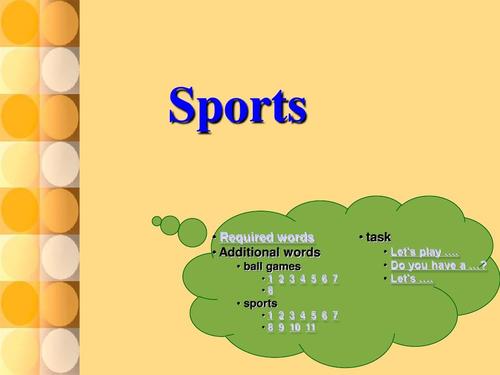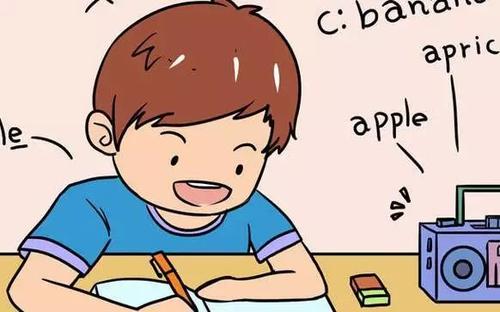初二英语期中上册知识重点五篇
为了老百姓的切身利益去思考、去学习、去工作,做务长远,谋大局的事情。下面是课件网小编为您推荐初二英语期中上册知识重点五篇。

1.初二英语期中上册重点
不定代词和不定副词的用法
1.左边的some、any、every、no与右边的body、one、thing构成不定代词,some、any、every、no与右边的疑问副词where构成不定副词;
2.一般情况下以some开头的不定代词和不定副词用于肯定句,以any开头的不定代词和不定副词用于否定句、疑问句;以no开头的不定代词和不定副词表示否定含义(no one为两个单词);
3.不定代词或不定副词和形容词连用时,形容词放在后面。
He has something important to do.他有重要的事情要做。(肯定句用something,形容词important放后)
Did you buy anything special? (一般疑问句用anything,形容词special放后)
情态动词
can(能,会),may(可以,可能,也许),must(必须,一定,应该)have to(必须,不得不)
1.肯定句结构:
主语+can/may/must+动词原形+其它,例如:I must go now.
2.否定句结构:
在can/may/must后加not,例如:You mustn’t talk aloud in the library.
3.一般疑问句结构:
把can/may/must提在主语前,例如:Must you go now?(Yes, I must. No, I needn’t.)
May I open the window?(Yes, you may. No, you needn’t.)
2.初二英语期中上册重点
1. on the street / in the street
表示“在街上”时,on the street 和 in the street 都可以,在美国多用on the street, 在英国多用in the street. 例如:We have a house in the street. 我们在街上有座房子。I met him on the street. 我在街上遇见了他。
2. would like / like
would like 和 like含义不同。like 意思是“喜欢”,“爱好”,而 would like 意思是“想要”。试比较: I like beer.=I’m fond of beer. 我喜欢喝啤酒。I’d like a glass of beer= I want a glass of beer. 我想要一杯啤酒。Do you like going to the cinema? 你喜欢看电影吗?Would you like to go to the cinema tonight? 你今晚想去看电影吗?
3. another / the other
(1)another 通常用于三个或三个以上或不确定数量中的任意一个人或 物体。 例如:
May I have another apple, please? 请在给我一个苹果好吗?
This coat is too small for me. Please show me another这件外套我穿太小,请再给我拿一件看看。
(2)the other 通常指两者中的另一个。例如:
He has two rulers. One is short. The other is long. 他有两把尺子,一把短的,另一把长的。 I have two brothers. One works in Xi’an . The other works in Beijing. 我有两个兄弟,一个在西安工作,另一个在北京工作。
4. have to /must
(1)have to和 must 都可以用来谈论义务,但用法略有不同。如果某人主观上觉得必须去做而又想去时,常用must。如果谈论某种来自“外界”的义务,常用have to。例如:I must stop smoking. 我必须戒烟。(自己想戒烟)They have to work for the boss.他们不得不为那个老板工作。(条件逼得他们去工作)
(2)have to 可用于多种时态,must 只能用于一般现在时。例如:
ll have to get up early tomorrow morning.明天早晨我必须早早起床。We had to work long hours every day in order to get more money.为了多挣钱,我们不得不每天长时间地工作。
(3)用于否定句时,mustn’t意思是“决不能”,“禁止”,而don’t have to意思是“不必”,相当于needn’t。例如:You mustn’t be late again next time.下一次你决不能再迟到。You don’t have to go there today. You can go there tomorrow.你今天不必到那里去了。你可以明天去。
5. hear sb. or sth.doing sth. / hear sb. or sth. do sth.
hear sb. or sth.doing sth.意思是“听到某人或某物在做某事”,而hear sb. or sth. do sth.意思“听到某人或某物做过某事”。试比较:I hear him singing an English song.听见他在唱英歌曲。
I heard him sing an English song.我听见他唱一首英文歌。
类似hear 这种用法的还有see, watch, listen, feel等感官动词。
6. any /some
any和some 都可以同不可数名词和可数名词的复数形式连用,但some一般用在肯定句中;any用在疑问句和否定句中。试比较:I want some money. 我想要点钱。Have you any money? 你有钱吗?I don’t have any money. 我一点钱也没有。
some 有时也用于疑问句,表示说话人期待一个肯定回答或鼓励人家说“是”。例如:
Would you like some more beer?请你再来点啤酒好吗?
Could I have some rice, please?请给我来点米饭好吗?
3.初二英语期中上册重点
1. 宾语从句的含义
在主句中做宾语的从句叫做宾语从句。
如:She knew that the teacher had seen the film.
她知道这位老师看过这部电影。
“that the teacher had seen the film”做 knew 的宾语,同时又是由连接词 that 引导的从句,所以它叫做宾语从句。
2. 宾语从句的分类
(1)动词宾语从句:顾名思义,它是位于动词后面的宾语从句。
如:He asked whose handwriting was the best in our class.他问我们班上谁的书法。
(2)介词宾语从句:顾名思义,它是位于介词后面的宾语从句。
如:I agree with what you said just now.我同意你刚才说的话。
(3)形容词宾语从句:顾名思义,它是位于形容词后面的宾语从句。
如:I am afraid that I will be late. 恐怕我要迟到了。
3. 引导名词性从句的连接词
(1)that:没有含义,在宾语从句中不做成分
(2)whether/if:表示是否,在宾语从句中不做成分。
I don't know if /whether he still lives here after so many years. 我不知道这么多年后,他是否还住在这里。
(3)连接代词:what, which, who, whom, whose(在宾语从句中做主、宾、表和定语)
连接副词:where, when, how, why(在宾语从句中做状语)
The small children don't know what is in their stockings.(what 在宾语从句中做主语)
这些小孩子不知道什么在他们的长筒袜里。
Could you tell me why you were late for the meeting this morning?(why 在宾语从句中做原因状语)
你能告诉我为什么你今天早上开会迟到吗?
4. 在做宾语从句的题目时应注意两点
(1)时态:
①当主句是现在时态时,宾语从句可以根据需要使用任何时态。
I don't know when he will come back.我不知道他将何时回来。
He tells me that his sister came back yesterday.他告诉我他姐姐昨天回来了。
②当主句是过去时态时,宾语从句必须是一种过去的时态。
She asked me if I knew whose pen it was.她问我是否知道这是谁的钢笔。
He said that he could finish his work before supper.他说他会在晚饭前完成工作。
③当表示客观事实或普遍真理的句子做宾语从句时,任何时候都用一般现在时。
The teacher said that the earth goes round the sun.老师说过地球绕着太阳转。
(2)语序:任何从句都使用陈述句语序,宾语从句当然也不例外。
4.初二英语期中上册重点
1.“主语 + 谓语”(即“主谓”句型)
例:They arrived in Harbin yesterday morning.
分析:“they”(主语)“arrived”(谓语)。
2.“主语 + 谓语 + 宾语”(即“主谓宾”句型)
例:I study English.
分析:“I”(主语)“study”(谓语动作)“English”(宾语即动作涉及的对象)。
3.“主语 + 谓语 + 间接宾语 + 直接宾语”(即“主谓双宾”句型)
例:Our teacher taught us English.
分析:“our teacher”(主语)“教”(谓语动作)“us”(间接宾语)“English”(直接宾语)。
4.“主语 + 谓语 + 宾语 + 宾语补足语”(即“主谓宾宾补”句型)
例:He asked her to go there.
分析:“he”(主语)“asked”(谓语动作)“her”(宾语即动作涉及的对象)“to go there”(补语—补充说明宾语做什么)。
5.“主语 + 系动词+ 表语”(即“主系表”句型)
常用的系动词有be, keep,lie, remain, stand, become, fall, get, go, grow, turn, look, feel, seem, smell, sound, taste, 等。
例:I am a teacher. 我是一名老师
分析:“I”(主语)“am”(系动词)“a teacher”(表语—即表明主语的身份)。
5.初二英语期中上册重点
1.主语:
句子所陈述的对象。
2.谓语:
主语发出的动作。一般是有动作意义的动词。
3. 宾语:
分为动词宾语和介词宾语,属于动作的承受者。
4. 系动词:
表示状态或状态变化的动词,没有实际的动作意义。如 be, 感官系动词(look, sound, smell, taste 和 feel)、保持类系动词(keep, stay 和 remain)、状态变化类系动词(become、get、turn 和 go)等。
5. 表语:
紧跟系动词后面的成分。
6. 定语:
修饰名词或代词的成分。
7. 状语:
修饰形容词、副词、动词或句子的成分。
8. 补语:
分为宾语补足语和主语补足语。是对宾语和主语的补充说明,与其有主动或被动的逻辑关系。
例如:You should keep the room clean and tidy.
你应该让屋子保持干净整洁。
(You是主语, should keep是谓语,the room是宾语,clean and tidy是宾语补足语。)
This kind of food tastes delicious.
这种食物吃起来很可口。
(This kind of food是主语, tastes是系动词, delicious是表语。)
注意:主语、谓语、宾语、系动词、表语、补语是一个句子的主干成分;定语和状语是一个句子的修饰性成分,不是主干成分。



